Written by Wendy R. Ellis DrPH (c), MPH; Co-Principal Investigator & Project Director, Building Community Resilience Collaborative; Sumner Redstone Global Center for Prevention & Wellness; George Washington University
Disclaimer: Moving Health Care Upstream is a collaborative effort co-led by Nemours Children’s Health System (Nemours) and the Center for Healthier Children, Families & Communities at the University of California- Los Angeles (UCLA). The views and opinions expressed in this article are those of the author(s) and do not necessarily reflect the official policy or position of Nemours, UCLA or the Moving Health Care Upstream initiative.

The Pair of ACEs Tree (pictured) depicts the interconnectedness of Adverse Community Environments (ACEs) – the soil in which some children’s lives are rooted – and the Adverse Childhood Experiences (ACEs) of their family environment, or branches on which children bud and grow.

The leaves on the tree represent the ‘symptoms’ of ACEs that are easily recognized in medical, educational and social service settings. Adverse childhood experiences can increase a person’s risk for chronic stress and poor coping mechanisms, and result in lifelong chronic illness such as depression, heart disease, obesity and substance abuse. Physical or sexual violence and abuse or neglect, for example, can exist as chronic stressors for individuals. The Pair of ACEs Tree is planted in soil that is steeped in systemic inequities and dysfunction, robbing it of nutrients necessary to support a thriving community. Adverse Community Experiences, such as lack of opportunity, limited economic mobility, fear of discrimination, and the associated effects of poverty and joblessness contribute to – and compound – the adversities experienced by individuals and families. Read these stories in our recent Huffington Post blog here http://huff.to/2l4lNKb.
[Free Webinar March 21st: Learn about communication tools you can use to start a dialogue on how to prevent and address the Pair of ACEs in your community. Register for Creating Real Community Change – Tools for Advocacy & Communication]
Healing the Tree: The Building Community Resilience (BCR) Approach
At the Building Community Resilience (BCR) initiative, we aim to create more fertile soil and a more vibrant tree to address, prevent and reduce the effects of Adverse Childhood Experiences (ACEs) and Adverse Community Environments (ACEs) on children’s health and wellbeing: The Pair of ACEs.
We know that resilience – or one’s ability to ‘bounce back’ in the face of adversity – can protect an individual from the accumulation of stress due to adverse childhood experiences. BCR, based at the Redstone Global Center for Prevention and Wellness at the George Washington University, takes this understanding to the community level in order to foster resilience that buffers against adversities impacting whole communities – and to break the cycle of poor health and other lifelong outcomes.
BCR recognizes that many socially vulnerable populations are already resilient in that they consistently ‘bounce back’ from the same adverse conditions. We build upon this understanding but aim higher. Building Community Resilience enables communities and individuals to bounce forward from chronic adversity, such as unemployment and community violence, so that they are better prepared to bounce back in times of acute shock, such as natural and man-made disasters.
Tools to Build Community Resilience
The Pair of ACEs Tree is just one of many tools BCR has created to communicate – in simple terms – the issues we aim to address. It’s being used to help multiple community and government agencies understand their potential roles in the work to build community resilience. With this image and other BCR tools, we are able to more readily engage diverse stakeholders in developing partnerships and goals that will address, and begin to alleviate, adversities embedded in communities. Often these community adversities are perpetuated because community systems serving children and families are not coordinated: for example, Justine landed in juvenile detention and is now on an inappropriate path in a system designed to handle crime, not mental health.
BCR offers additional tools to help support community change. The language used with the Pair of ACEs Tree can be customized to fit the needs of other communities to build tailored, clear and concise communications to change how public systems prioritize community issues, and influence change. In the policy arena, the Pair of ACEs tree illustrates the interconnections of individual and community adversities, but also provides a framework to begin to discuss how to measure efforts designed to solve the problem.
BCR in Communities Around the Country
The BCR approach works to establish and support partnership and collaboration between local, community-serving initiatives and city and county agencies, for example, so community infrastructure and economic vitality can be improved. This can include solutions that provide access to affordable housing, safer streets, more equitable access to education and financial sustainability.
BCR partners in Dallas (TX), Cincinnati (OH), Portland (OR), Washington (DC) and Wilmington (DE) are successfully using the Pair of ACEs image and other BCR communications tools and tactics to engage partners in efforts to set goals for building community resilience and implement policy and practice change.
Join the BCR Movement
To learn more about how BCR coalitions have used our communications tools, their resilience building successes, and the challenges they have faced, register to join our March 21 webinar go.gwu.edu/BCRwebinar.
Join our community on Twitter @ResilNation or visit go.gwu.edu/BCR.
